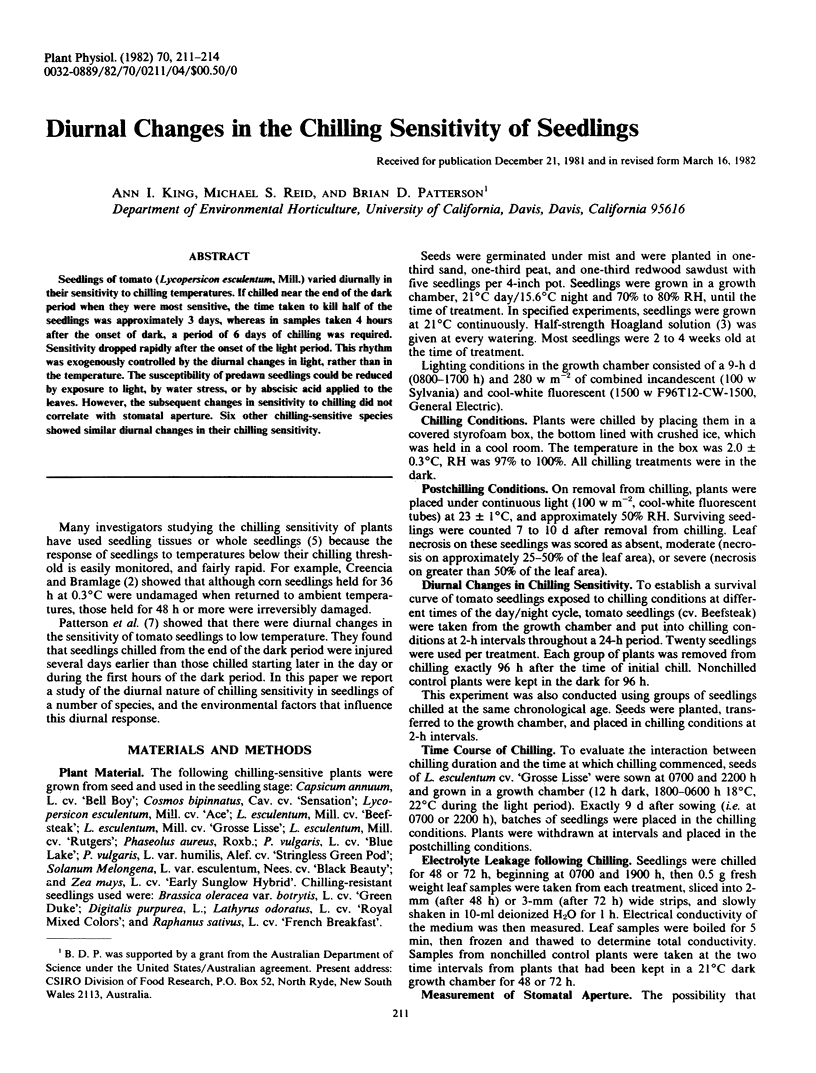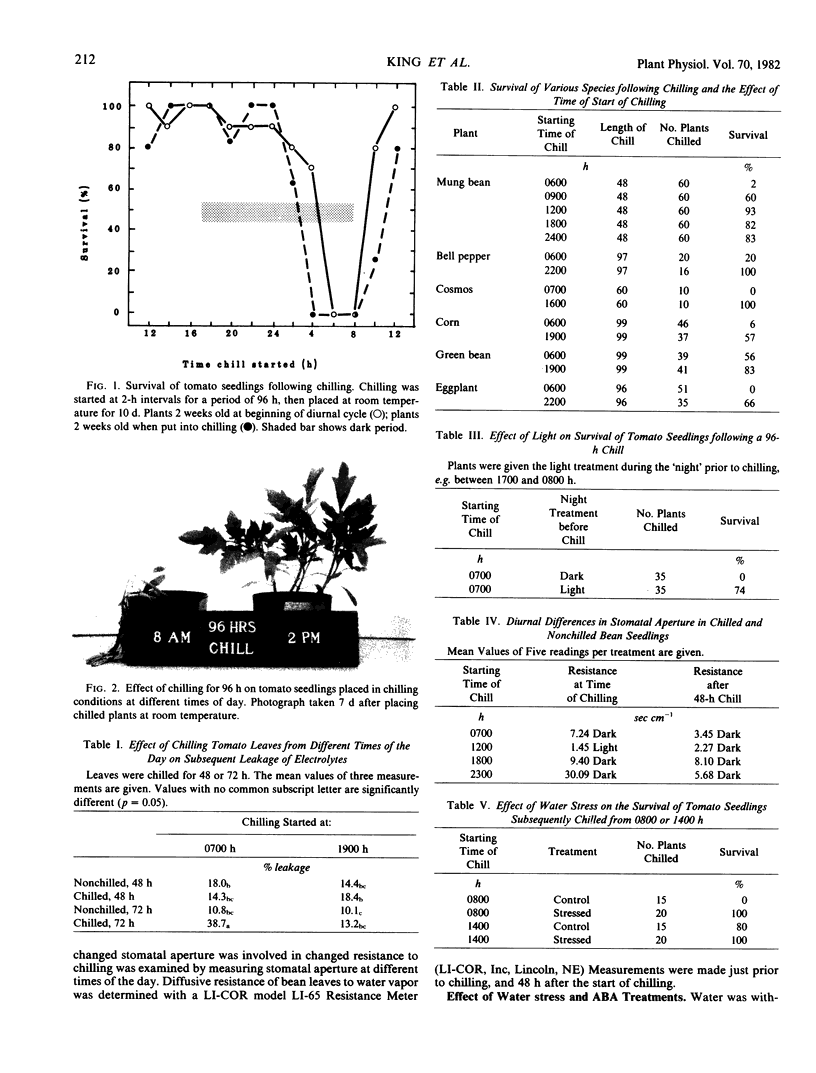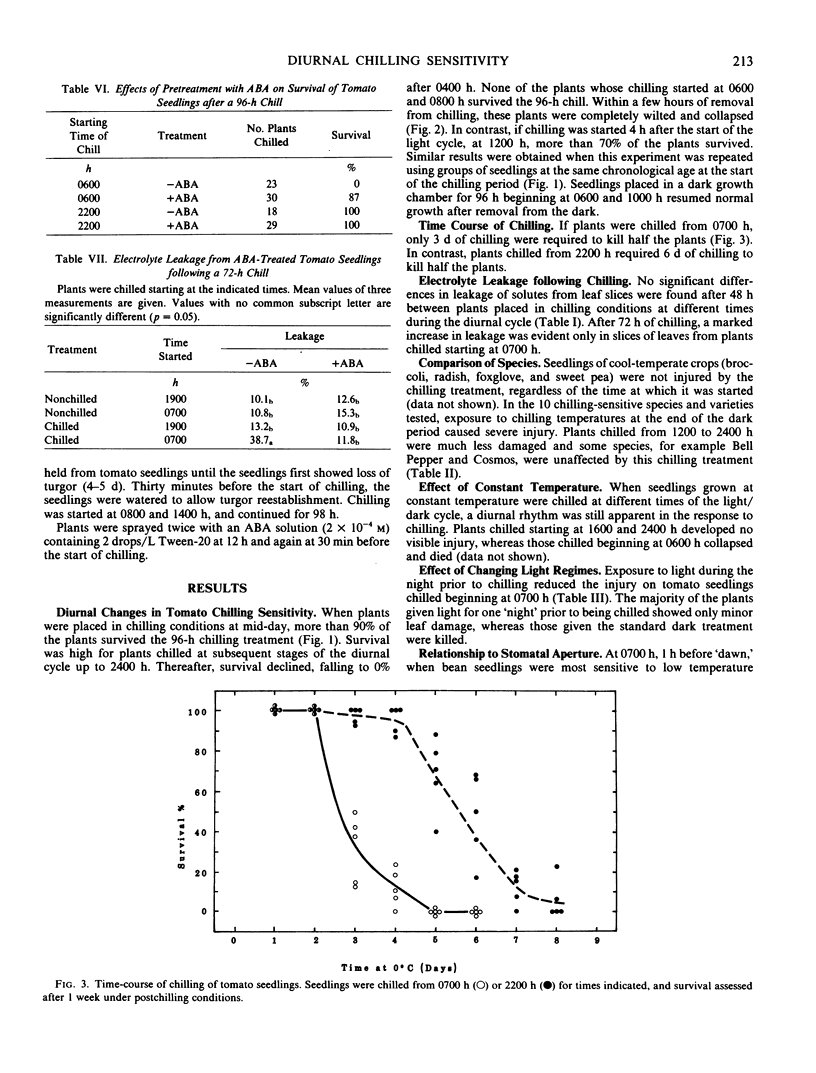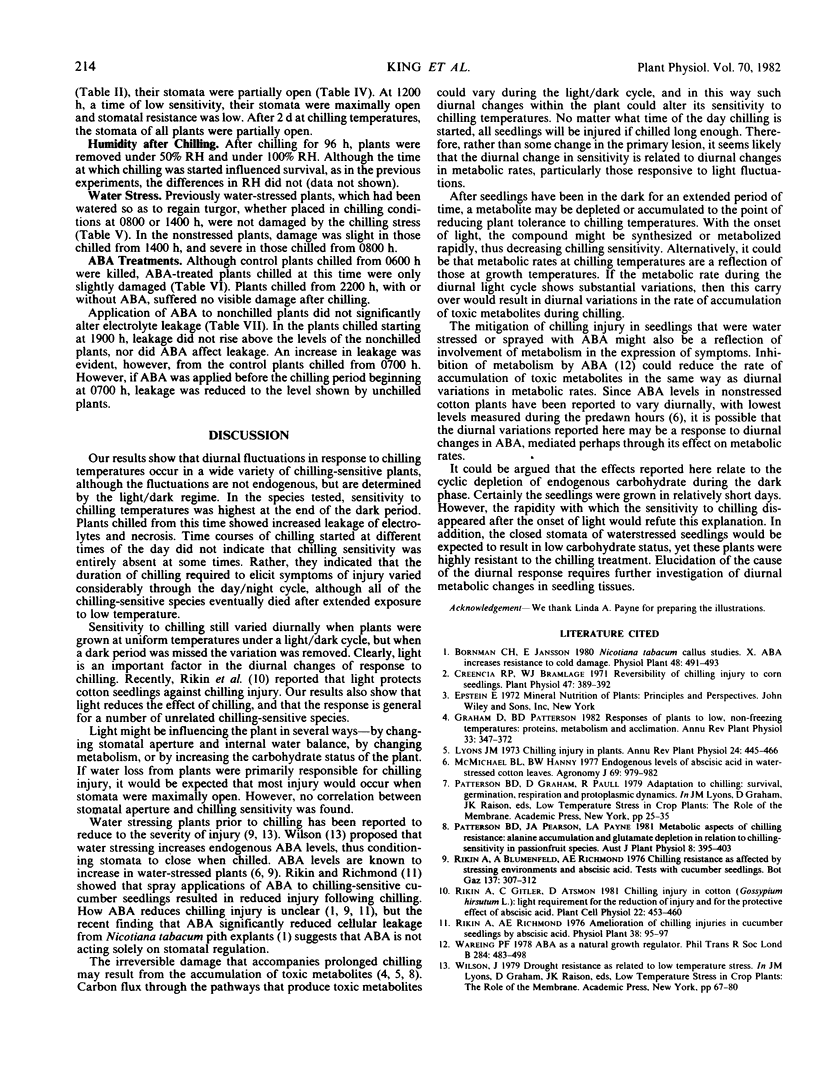Abstract
Seedlings of tomato (Lycopersicon esculentum, Mill.) varied diurnally in their sensitivity to chilling temperatures. If chilled near the end of the dark period when they were most sensitive, the time taken to kill half of the seedlings was approximately 3 days, whereas in samples taken 4 hours after the onset of dark, a period of 6 days of chilling was required. Sensitivity dropped rapidly after the onset of the light period. This rhythm was exogenously controlled by the diurnal changes in light, rather than in the temperature. The susceptibility of predawn seedlings could be reduced by exposure to light, by water stress, or by abscisic acid applied to the leaves. However, the subsequent changes in sensitivity to chilling did not correlate with stomatal aperture. Six other chilling-sensitive species showed similar diurnal changes in their chilling sensitivity.
Full text
PDF



Images in this article
Selected References
These references are in PubMed. This may not be the complete list of references from this article.
- Creencia R. P., Bramlage W. J. Reversibility of chilling injury to corn seedlings. Plant Physiol. 1971 Mar;47(3):389–392. doi: 10.1104/pp.47.3.389. [DOI] [PMC free article] [PubMed] [Google Scholar]
- Rorabeck C. H. The management of the flail upper extremity in brachial plexus injuries. J Trauma. 1980 Jun;20(6):491–493. doi: 10.1097/00005373-198006000-00010. [DOI] [PubMed] [Google Scholar]



